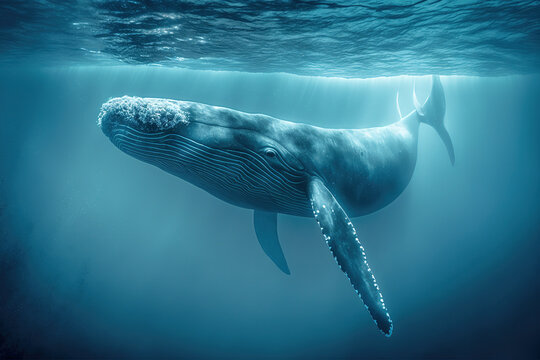Introduction:
In the vast expanse of the world's oceans, the blue whale reigns as the largest creature to have ever existed on our planet. Its awe-inspiring size and grace have fascinated humans for centuries. As we embark on a journey to understand the lifespan of this magnificent marine giant, we delve into the secrets of its longevity, exploring the stages of life and the factors that contribute to its remarkable existence.
Birth and Early Life:
The journey of a blue whale begins with a birth that is nothing short of extraordinary. Newborn blue whales, known as calves, enter the world as colossal beings, measuring around 23 to 27 feet (7 to 8 meters) in length and weighing approximately 6,000 to 8,000 pounds (2,700 to 3,600 kilograms). These calves are nurtured and cared for by their mothers, who provide them with nutrient-rich milk, enabling rapid growth.
The Growth Spurt:
During their first year, blue whale calves experience an astonishing growth spurt. They consume copious amounts of milk, gaining weight at an impressive rate of around 200 pounds (90 kilograms) per day. By the end of their first year, these majestic creatures can measure up to 50 feet (15 meters) in length. This period of rapid growth sets the stage for their remarkable journey towards adulthood.
Adolescence and Maturity:
As blue whales transition from infancy to adolescence, their growth rate slows down significantly. During this phase, which lasts for several years, they continue to gain size and strength while honing their hunting and social skills. It is estimated that blue whales reach sexual maturity between 5 and 10 years of age, although the exact age can vary among individuals.
Prime Years of Adulthood:
Once blue whales reach sexual maturity, they enter into their prime years of adulthood. At this stage, typically between 25 and 30 years of age, they are fully developed and capable of breeding. These majestic creatures exhibit remarkable longevity, with lifespans estimated to be around 70 to 90 years, although some studies suggest they could potentially live longer.
Survival Challenges and Threats:
Despite their incredible lifespan potential, blue whales face numerous challenges and threats to their survival. Human activities such as commercial whaling, pollution, climate change, and underwater noise pollution pose significant risks to these gentle giants. Efforts to protect and conserve blue whales, including international bans on commercial whaling and marine conservation initiatives, play a crucial role in safeguarding their existence for future generations.
Migration and Feeding Habits:
Blue whales are renowned for their epic migrations across vast oceanic expanses. They undertake extensive journeys in search of food and suitable breeding grounds. These migratory patterns vary among populations, but it is known that blue whales tend to follow seasonal food availability. They are primarily filter feeders, consuming vast amounts of krill and small fish through a process called lunge feeding, where they engulf large volumes of water and filter out prey using their baleen plates.
Legacy and Conservation:
The blue whale's immense lifespan contributes to its significance as a keystone species in the marine ecosystem. These majestic creatures play a vital role in maintaining the balance of oceanic food chains. By conserving and protecting their habitats, we not only ensure the survival of these magnificent beings but also preserve the biodiversity and health of our oceans.
Conclusion:
The lifespan of a blue whale encompasses decades of growth, survival, and grace in the vast expanses of our oceans. From their birth as colossal calves to their maturation into majestic adults, blue whales exemplify the wonder and resilience of the natural world. Let us strive to protect and cherish these gentle giants, allowing future generations to marvel at their splendor and ensuring their place in the intricate web of life.

